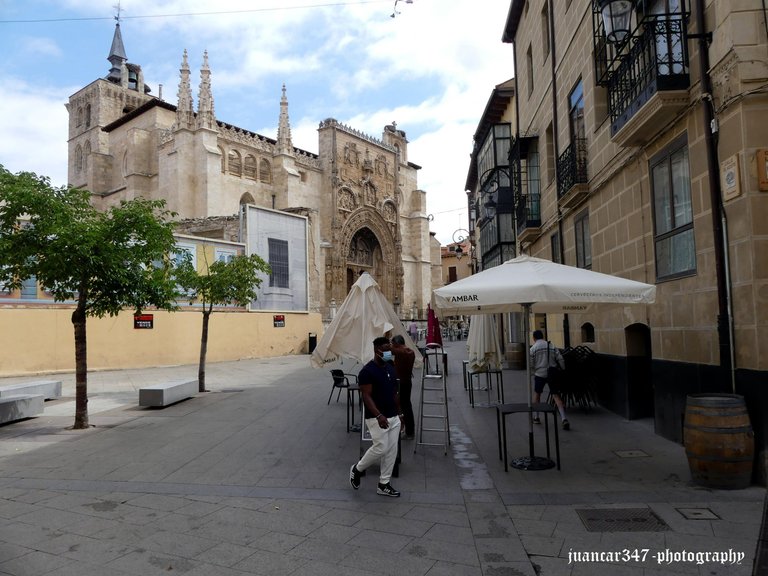
Today I would like to invite you to travel, even virtually, to one of those old and unique cities nestled in the heart of the mythical Castile and share with all of you, one of those monumental landmarks, where it is difficult to discern which are the borders that separate the Art and Architecture, if such a separation really exists.
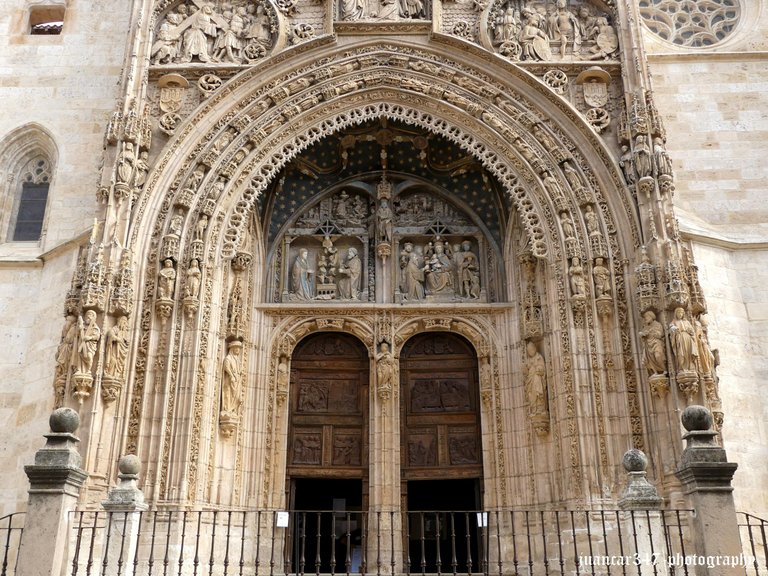
To do this, it is necessary that we travel about one hundred and fifty kilometers from Madrid, the capital of Spain, to reach Aranda de Duero and once there, we allow ourselves to be freely seduced by the media beauty of its old town, where it stands out splendidly, a jewel of the so-called Elizabethan Gothic style - I would rather describe it as a Plateresque Gothic style - which is none other than its imposing church of Santa María la Real.
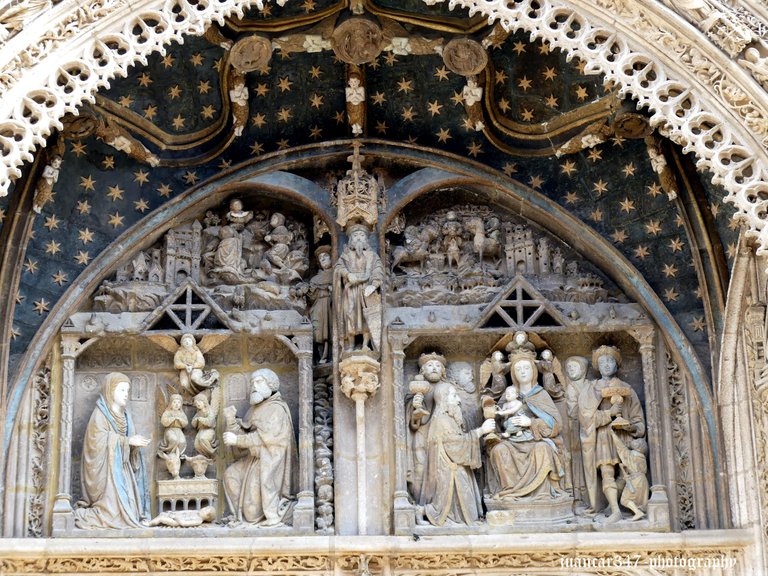
But before letting ourselves be carried away by its seductive and unusual presence, it may be appropriate to comment that this temple of such spectacular proportions and such an unexpected cover, rose above a previous one, of obsolete Romanesque origins, of which barely a small sentry survives -perhaps it is opportune note, that it was not uncommon in medieval times, to cover the temples with fortified elements - located on the south side, very close to the tower and the apse or head, being the reasons for such a decision, the desire to have a temple of larger proportions, detail that denotes the prosperity that this city had, at least in the middle of the fourteenth century, which is when the old temple was demolished to build the new one.
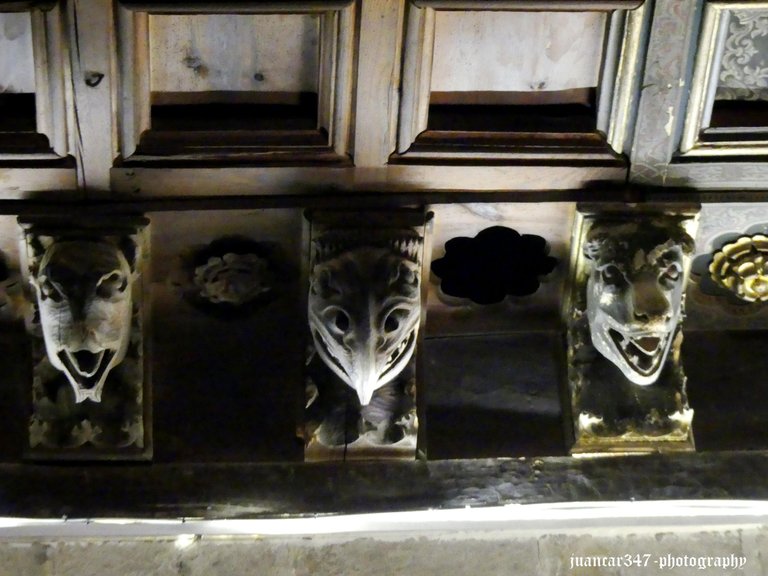
A temple, in whose monumental façade, two of the most important architects of the neighboring cathedral of Santa María de Burgos intervened, such as the extraordinary Magister Muri of German origin, Juan de Colonia and his son Francisco.
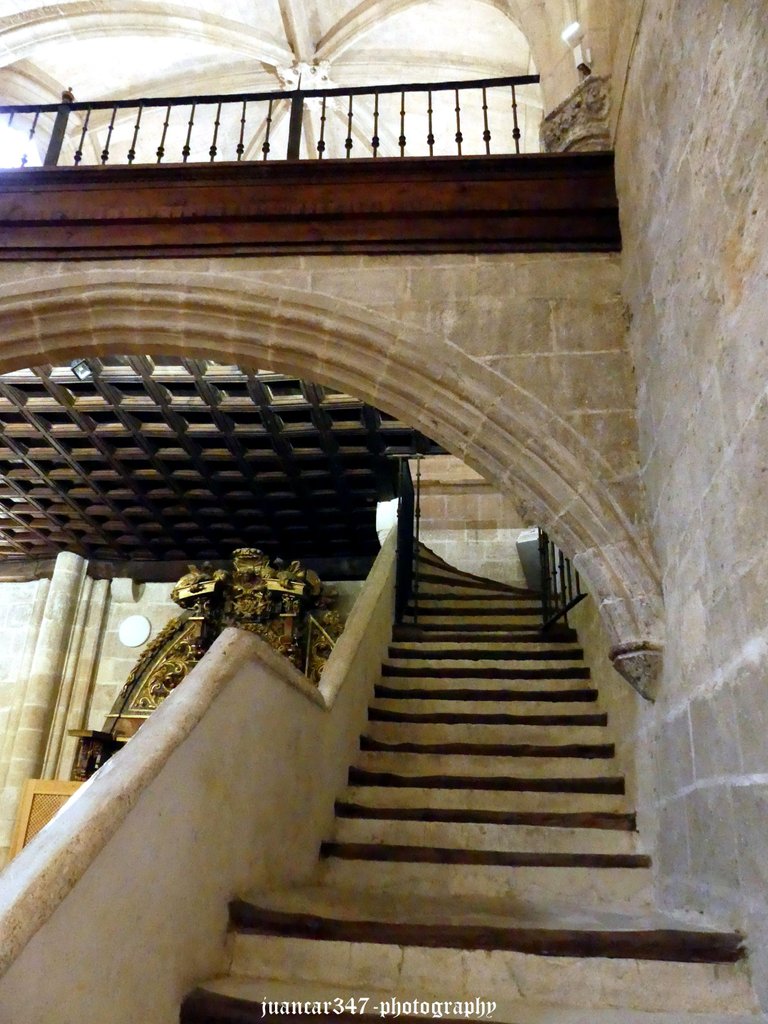
The cover, which in itself is a work of art and therefore attracts practically all the attention, reproduces, on a monumental scale, a formidable Main Altarpiece sculpted in stone and illustrated with the most relevant scenes from the life and passion of Jesus Christ, occupying the central part of the tympanum, some extraordinary scenes of the Nativity and the Epiphany or Adoration of the Magi.
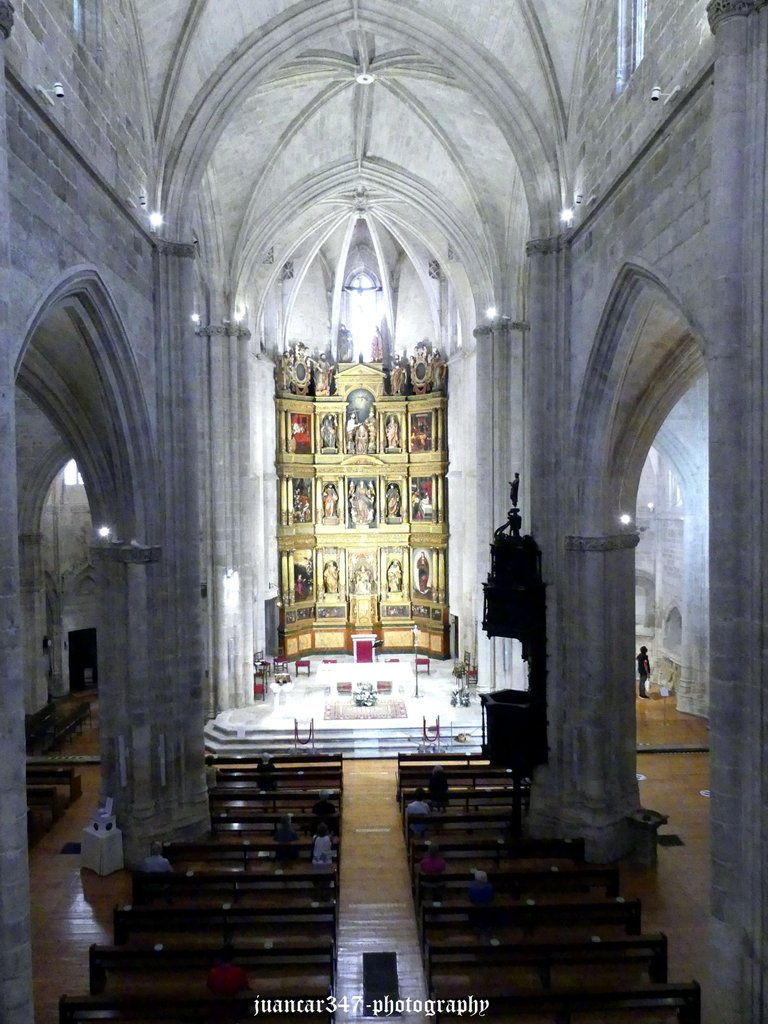
Scenes, which on the other hand and judging by the remains of the polychrome still existing, must have been in its time a spectacle of beauty with which all the pilgrims who passed through the city and came to this church to present your respects.
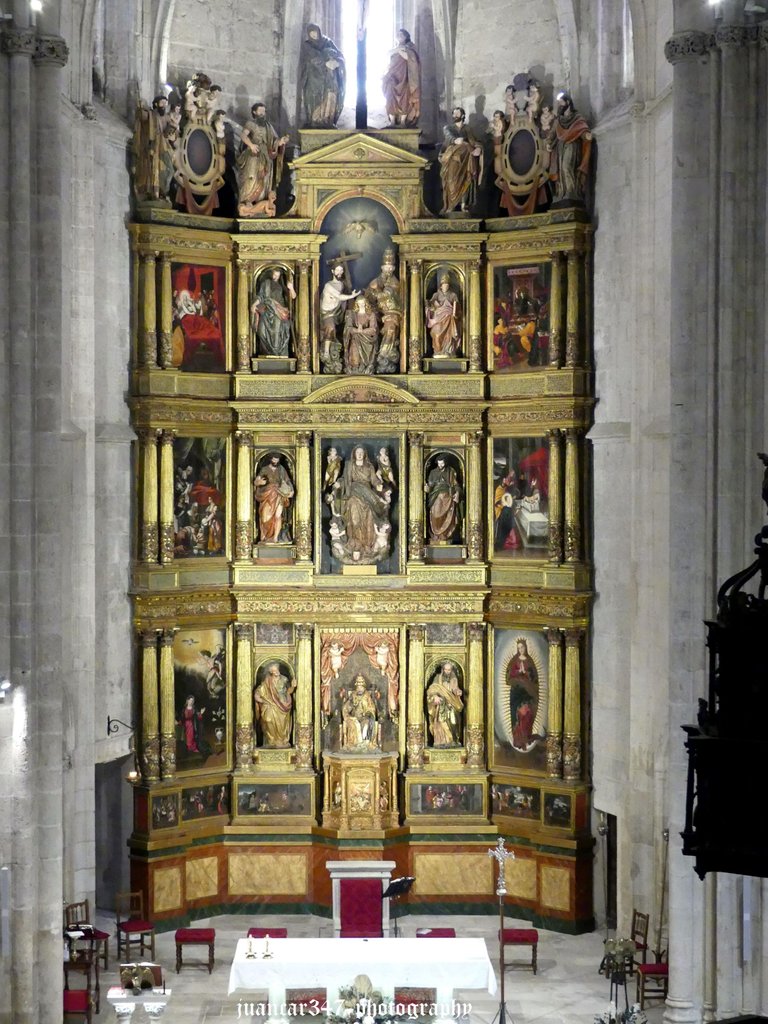
Façade, which in addition to being the main one, is oriented towards the west, that is, towards the west or the place where the sun sets, so that it could be assumed that these, both the pilgrims and the faithful who came to pray, did so leaving the darkness behind them to receive the light from the front, located on the projection side or east side, a place occupied by the apse and the head and symbolically also, oriented towards Jerusalem, the Holy City.
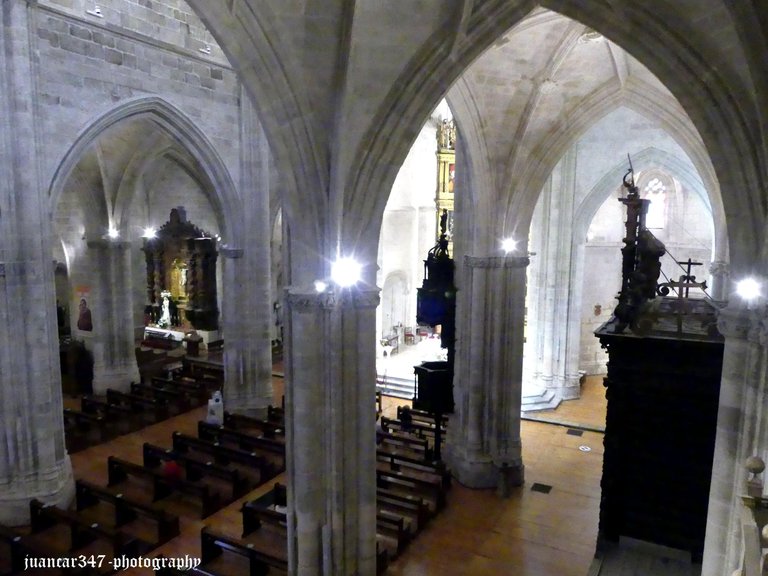
The characteristics of its interior, you will realize at a first glance, that they obey the main patterns of the Gothic style, with its superb columns topped in vaults whose arms extend like the branches of that sacred tree where the Holy Family found shelter and food. during his flight to Egypt, the palm tree, and which again shows, by its spectacularity and height, what the father of German Romanticism, Goethe, said about the Gothic builders: that they sought God in the heights.
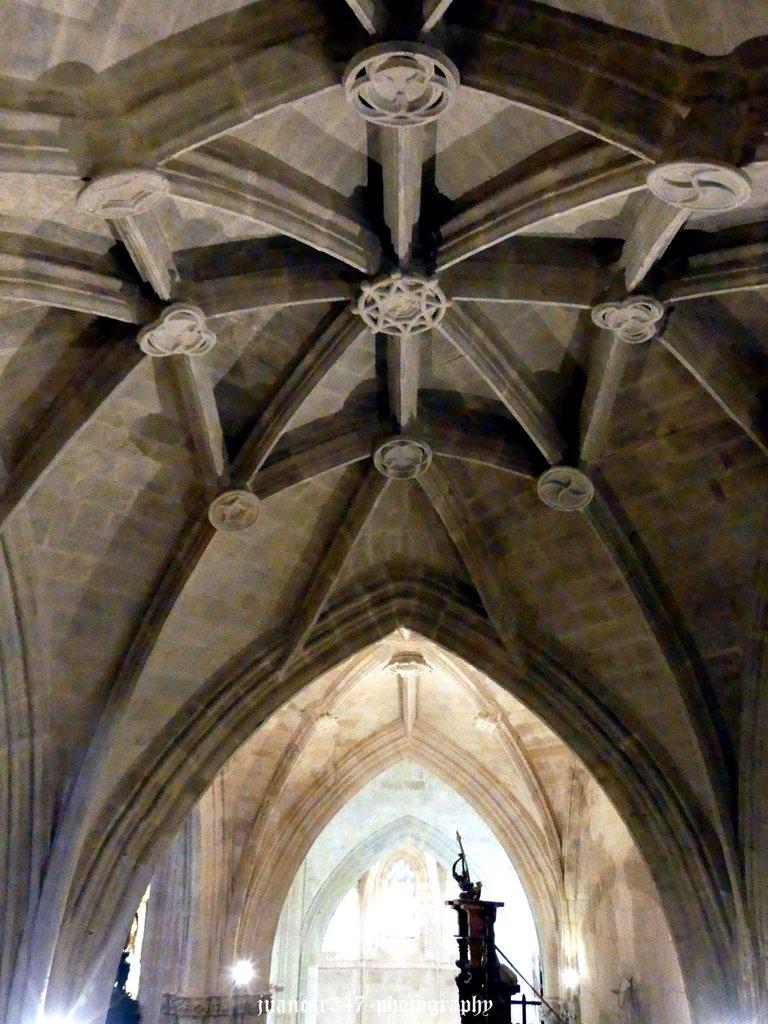
It is also worth looking at the original wood of the parquet that supports the monumental Renaissance choir, the latter is the work of the masters Miguel de Espinosa and Juan de Cambray, and observe the corbels, with representative carvings of the typical monsters that characterized Romanesque temples and what little did that great medieval mind like, which was Bernard of Clairvaux, Saint Bernard.
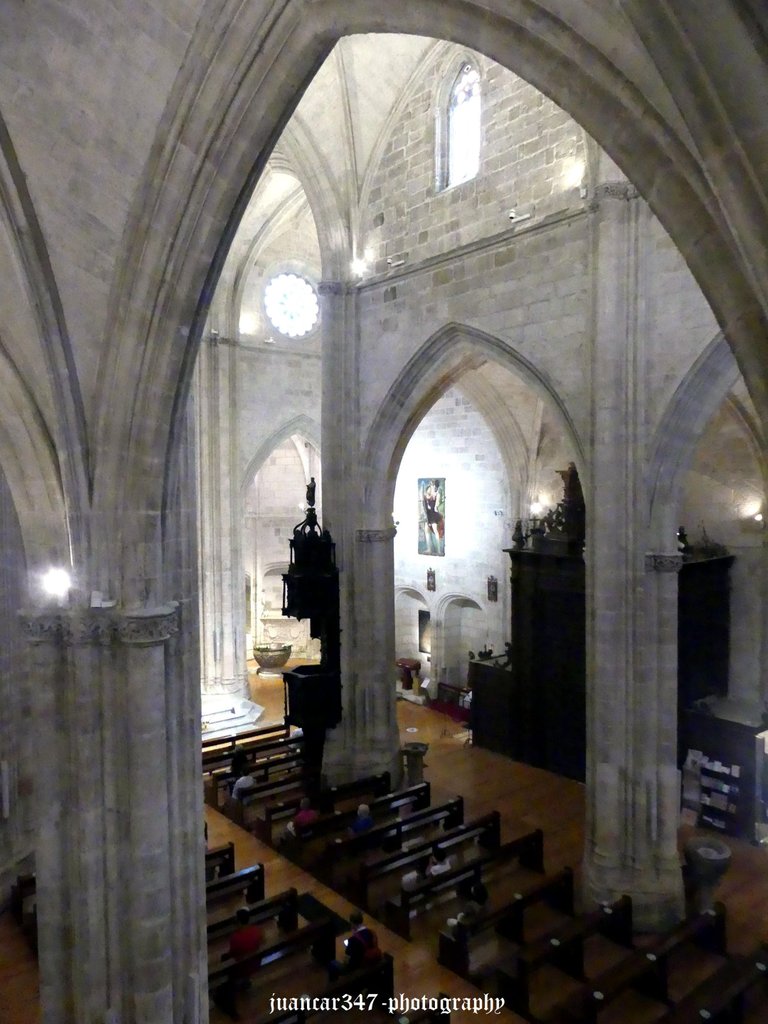
Since it is allowed to access it, that is, the choir, from here you will appreciate as a whole, everything that has been of this temple, getting an approximate idea of its grandeur and being able to appreciate, in addition, the magnificent Main Altarpiece located behind the altar which is not, however, the original, unfortunately lost in 1601 as a result of a fire, but another, Roman style, made later by Gabriel de Pinedo and Pedro Cicarte.
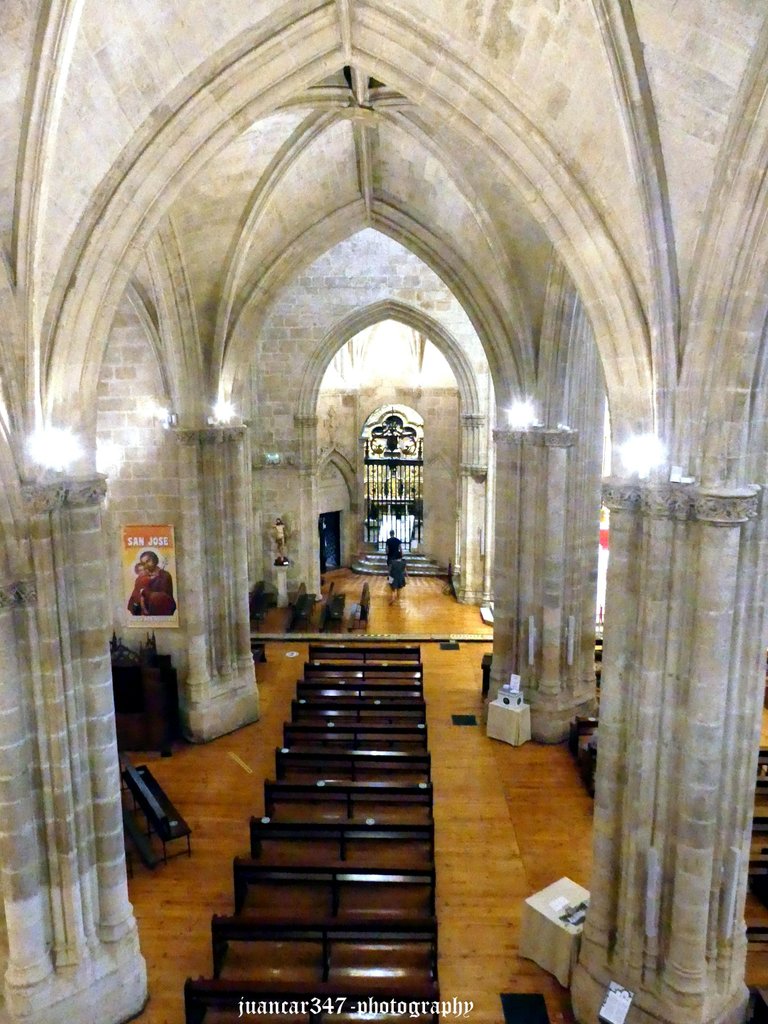
In short: an authentic artistic and architectural gem, which I hope has been to your liking and will invite you, if you have the opportunity, to make a more detailed and prolonged visit to this part of the authentic heart of Castile, which is the monumental city of Aranda. of Duero.
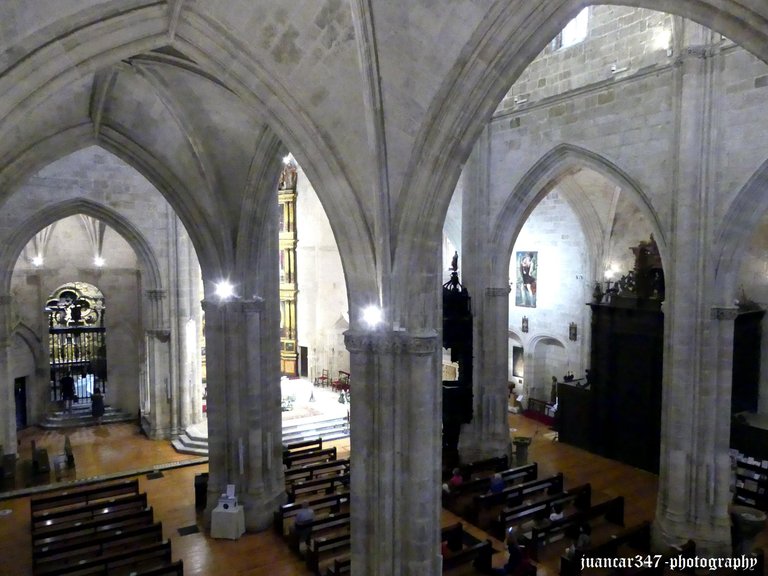
RELATED MOVIE:
NOTICE: Both the text and the photographs that accompany it, as well as the video that illustrates it, are my exclusive intellectual property and therefore are subject to my Copyright.
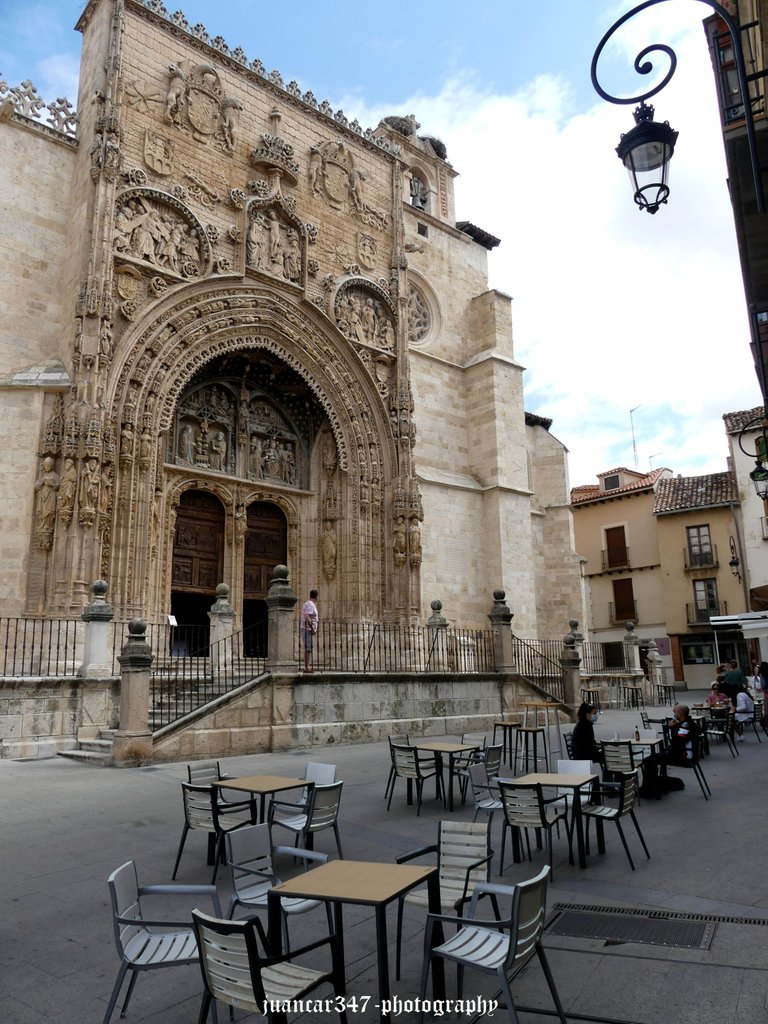
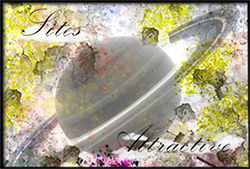



Congratulations, your post has been added to Pinmapple! 🎉🥳🍍
Did you know you have your own profile map?
And every post has their own map too!
Want to have your post on the map too?
Thank-you very much
This is the first time I've encountered "Plateresque" in our community. So, naturally, I googled the word and it said that the terminology relates to an artistic movement, particularly architectural in nature, and was conceived in Spain during the late 15th century. No wonder the church details, especially the ones dominating the upper portion of its main doors, appear surreal - as if the work freshly came out from a sculptor's factory. The extreme intricacies of the elaborately carved elements are absolutely mind-blowing in that they exude a mesmerizing effect.
Furthermore, those sculpted faces wedged on the upper ceiling (or might be somewhere else) surely look eerie and gave me the creeps. And while I was scratching my head, I pondered that they're probably gargoyles since the church sports the Gothic style (please correct me if I'm wrong). And I'm wondering why they're situated within the interior space? Are those creatures suppose to be installed outside, to serve as guardians of the building? I'm simply curious. And I'm itching to learn more. Here's the photo:
Interesting questions that you ask me. We will go by parts. This church, although it began to be built in the mid-fourteenth century, was completed in the fifteenth century, at a time, in my opinion, in which the Gothic was already giving way to other artistic styles, such as the Renaissance or the Plateresque, the latter style, of which there are numerous examples and although I have photographs and have written something about it, I recommend that you look for a very interesting one: the front of the Colegio de San Gregorio, in Valladolid. On the question you ask me about photography, they are not gargoyles, although like these, they also fulfill a symbolic function. I would say that they are reminiscent of Romanesque art, that in addition to their symbolic function on the unconscious of the medieval faithful, since they generally referred to sins, such as lust and other capitals, they also had a technical function: that of supporting the coupling of the roofs of the churches. I think you will understand it better with this photograph of a Romanesque church and you will see what I am talking about. The only difference is that these from Santa María la Real are made of wood and inside the nave, supporting the framework on which the choir sits. Just in case, I present you some photographs of a Romanesque hermitage in ruins, where I think you will see everything clearer. Always a pleasure to comment with you.
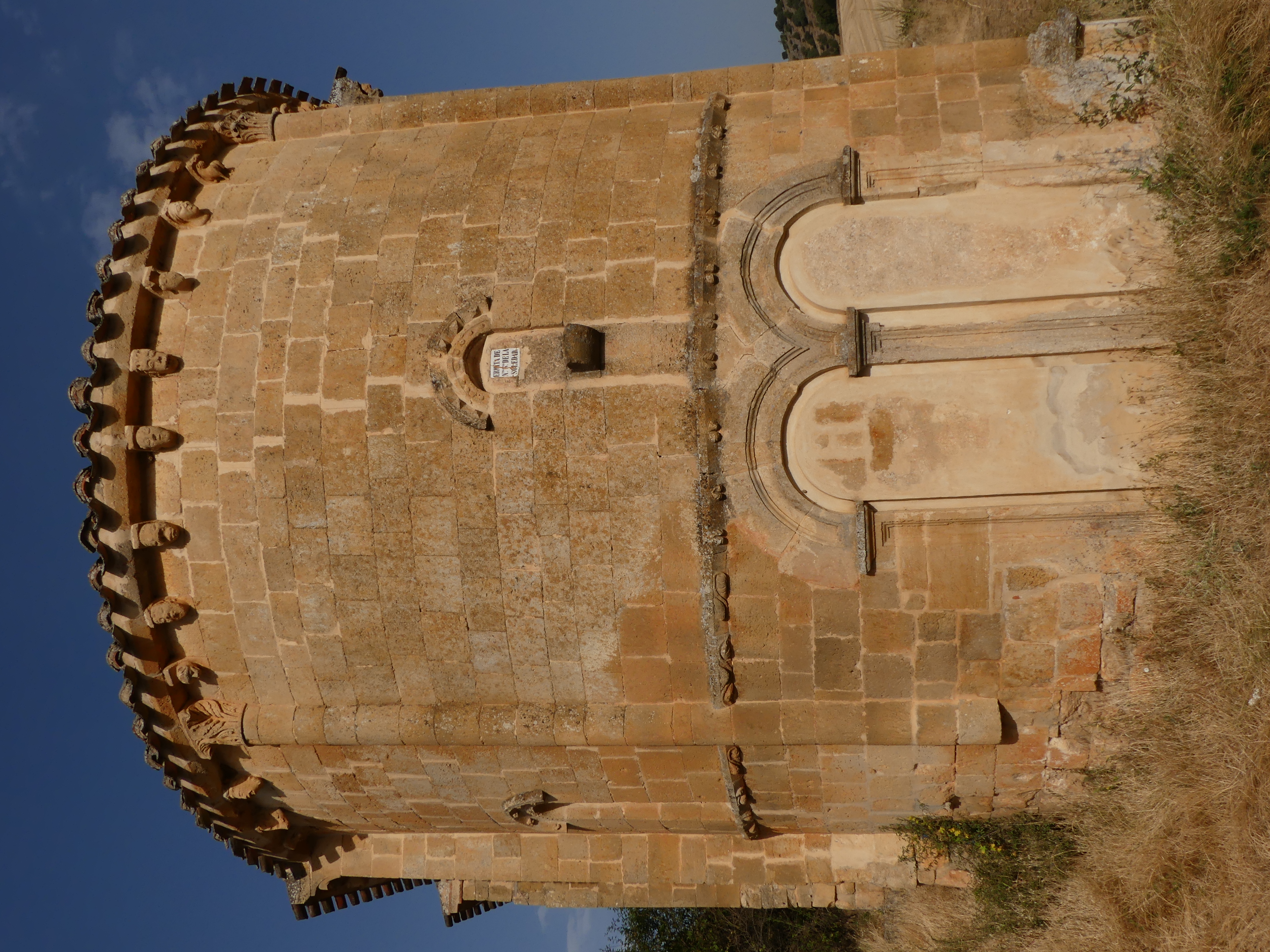
Interesantes las cuestiones que me planteas. Iremos por partes. Esta iglesia, aunque se comenzó a levantar a mediados del siglo XIV, se terminó de construir en el siglo XV, en un momento, en mi opinión, en el que el gótico ya estaba dejando paso a otros estilos artísticos, como el renacentista o el plateresco, estilo éste último, del que hay numerosos ejemplos y aunque tengo fotografías y he escrito algo al respecto, te recomiendo que busques uno bastante interesante: la portada del Colegio de San Gregorio, en Valladolid. Sobre la cuestión que me planteas sobre la fotografía, no son gárgolas, aunque como éstas, también cumplen una función simbólica. Yo diría que son reminiscencia del arte románico, que además de su función simbólica sobre el inconsciente de los fieles medievales, pues generalmente hacían referencia a pecados, como la lujuria y otros capitales, también tenían una función técnica: la de hacer de soporte para el acople de los tejados de las iglesias. Creo que lo entenderás mejor con esta fotografía de una iglesia románica y verás de qué hablo. La única diferencia, es que estos de Santa María la Real, están hechos en madera y en el interior de la nave, haciendo de soporte del entramado sobre el que se asienta el coro. Por si acaso, te presento unas fotografías de una ermita románica en ruinas, donde creo que lo verás todo más claro. Siempre un placer comentar contigo.
Oh, excellent. Now I understand. Thank you so much for the needed enlightenment! At first impression, I thought those roof supports were gargoyles because of their striking facial features. However, learning that they're structural components for the building's roofing system, their important purpose has truly cemented their place in that landmark's architecture. Being symbolic capitals as well, their significance has also added to their complementary functions from a religious perspective. Have a fantastic week ahead @juancar347!
Hi Juankar
What a beautiful portico, to spend hours and hours looking at it and surely we would miss something.
The spectacular interior like all Gothic churches, with their height they are all very beautiful
How lucky they let you in the choir, the perspective is spectacular
Very nice and instructive entrance
Happy Sunday
It is true, you do not always have the opportunity to access the choir, a place from which you have a much broader perspective of the church nave, although I did not have much time to enjoy unraveling the many symbolic enigmas that I know had. recorded at key points, because mass began and I have always been very respectful. They are places where I would spend hours and hours observing and rambling and you always learn something new, but many things remain in the pipeline. Happy Sunday
Es cierto, no siempre se tiene la oportunidad de poder acceder al coro, lugar desde el que se tiene una perspectiva mucho más amplia de la nave de la iglesia, aunque tampoco dispuse de mucho tiempo para gozar desentrañando los numerosos enigmas simbólicos que me consta había grabados en los puntos de clave, porque empezaba la misa y siempre he sido muy respetuoso. Son lugares donde me pasaría horas y horas observando y divagando y siempre aprendes algo nuevo, pero se quedan en el tintero muchas cosas. Feliz domingo
Impresionante y magnífica!!! Ah malaya quién pudiera visitar esta obra arquitectónica. Admiro tus ojos que han visto tanta belleza, @juancar347, sinceramente. Mientras sonaban las campanas, recordé un relato en el que un clérigo espantaba los demonios con el sonido de las campanas y éstos se montaban encima de la iglesia a esperar que durmiera para entrar a ella y cuando entraban, las paredes se tambaleaban. De allí la leyenda que cuando una persona pecadora entra a una iglesia se hace una grieta en las paredes. Por eso yo casi no visito las iglesias porque me pueden caer encima las paredes. jajaja. Un mal chiste en un domingo con internet fatal. Abrazos
Impressive and magnificent !!! Ah malaya who could visit this architectural work. I admire your eyes that have seen so much beauty, @ juancar347, honestly. While the bells were ringing, I remembered a story in which a clergyman frightened the demons with the sound of the bells and they mounted on top of the church to wait for him to sleep to enter it and when they entered, the walls would sway. Hence the legend that when a sinful person enters a church a crack is made in the walls. That is why I hardly visit churches because the walls can fall on me. LOL. A bad joke on a Sunday with fatal internet. Hugs
I think that's why I needed the glasses like Mayo water. I suppose what happened to Tiresias has happened to me, that for seeing too much, the gods left him blind, although you see, they awakened his sixth sense. I never tire of contemplating so much beauty, of feeling it, living it, studying it. It is an immeasurable heritage that our ancestors bequeathed to us and in addition to fascinating me, I am proud of it. There is no bad joke, that even Sigmund Freud studied them and you cannot imagine the amount of stories of all kinds that there are in most churches, so that on that side, calm down. Now I am planning to make a new getaway and I am sure that I will see many beautiful things, not only architectural and artistic, but the most essential of all: natural ones. That this is also part of the teachings of life, even though its beauty is fading from human brutality. A hug
Creo que por eso necesitaba las gafas como agua de Mayo. Supongo que me ha pasado lo que a Tiresias, que por ver demasiado, los dioses le dejaron ciego, aunque mira tú, que le despertaron el sexto sentido. No me canso de contemplar tanta belleza, de sentirla, vivirla, estudiarla. Es una herencia inconmensurable que nos legaron nuestros antepasados y además de fascinarme, me siento orgullosa de ella. No hay chiste malo, que incluso los estudió Sigmund Freud y ni te imaginas la cantidad de historias de todo tipo que hay en la mayoría de las iglesias, de manera que por ese lado, tranquila. Ahora estoy planeando hacer una nueva escapada y seguro que veré muchisimas cosas bellas, no sólo arquitectónicas y artísticas, sino las más primordiales de todas: las naturales. Que eso forma parte también de las enseñanzas de la vida, aunque su belleza se esté marchitando por la brutalidad humana. Un fuerte abrazo
Oh wow! Absolutely beautiful. Not only are these beautifully sculptured buildings in wonderful placement but the street scapes. Absolutely divine. Must be a great town to walk along. Stunning
It is an old city, which still preserves many of the attractions that made it important during the Middle Ages and whose heritage can be translated into authentic architectural beauties such as this church of Santa María la Real, located in the heart of the old quarter, where it is always a pleasure to get lost and savor it with tranquility. Thank you very much for your comment and kind regards.
Es una ciudad antigua, que todavía conserva muchos de los atractivos que la hicieron importante durante la Edad Media y cuya herencia puede traducirse en auténticas bellezas arquitectónicas como esta iglesia de Santa María la Real, situada en pleno corazón del barrio antiguo, donde siempre resulta un placer perderse y saborearlo con tranquilidad. Muchas gracias por tu comentario y un cordial saludo.
Finally, I see a Gothic style church in your post. The façade and columns look awesome, thanks.
Although I started many years ago with an interest in Romanesque art, I am also a great admirer of Art in general and the Gothic style in particular. Thanks for your comment. Greetings
Aunque comencé hace muchos años interesándome por el arte Románico, soy también un gran admirador del Arte en general y del estilo gótico en particular. Gracias por tu comentario. Saludos
Congratulations @juancar347! You have completed the following achievement on the Hive blockchain and have been rewarded with new badge(s) :
You can view your badges on your board and compare yourself to others in the Ranking
If you no longer want to receive notifications, reply to this comment with the word
STOPTo support your work, I also upvoted your post!
Check out the last post from @hivebuzz:
Thank-you very much
You're welcome @juancar347, that's with a lot of pleasure 😊👍 We hope you're having a good week! See you soon.
Well done @juancar347! We're happy to inform you that this publication was specially curated and awarded GOLD MARK in Architecture Brew #38. Congratulations!
Subscribe to Architecture+Design, an OCD incubated community on the Hive blockchain.
Thank-you very much
With our utmost pleasure @juancar347. More power and congratulations!
The rewards earned on this comment will go directly to the person sharing the post on Twitter as long as they are registered with @poshtoken. Sign up at https://hiveposh.com.